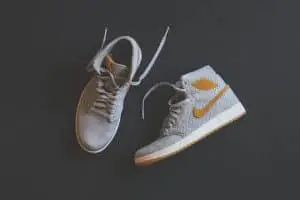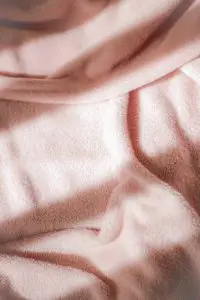Fabrics react differently to touch, feel, and several other features. They also respond differently to the body when worn and require special maintenance instruction. If you’re looking to utilize crepe or chiffon, it is essential to learn the differences. A crepe dress is quite different from a chiffon dress in many ways. If you can’t differentiate between the two fabrics, you’re in luck. This crepe vs chiffon will help you learn the differences to cater to your different needs. Although they differ in their appearances and manufacturing process, both fabrics are unique.
This article will talk about crepe and chiffon and the different crepe and chiffon fabrics. This article explores how you can also care for the two materials.
What is Chiffon?
Chiffon means rag in French. It is a sheer, elegant fabric that’s quite limp and offers wearers a beautiful drape. Chiffon features a supple, soft, and thin hand with a flat and crepe-like texture. It refers to a light plain-woven sheer fabric, and it is quite delicate in appearance. However, it is a strong and balanced fabric, and you can dye it for use in dresses, scarves, lampshades, and many more.
However, many people might find it challenging to work with because it comes in a slippery and light texture. Additionally, chiffon is quite delicate and should be hand-washed very gently. Overall, chiffon gives you a magical look and adds to the wearer’s personality. Chiffon is lightweight and made with plain weave. Manufacturers tightly twist it in both weft and warp. The regular wrinkles in the finished product come from pulling the weft yarn from one direction to another.
Chiffon can be rough to the feel but is an elegant choice. Sometimes, it is known as crepe chiffon, making it ideal for many unique occasions. It is famous for making scarves, linings, nightgowns, dresses, etc.
How to use the Chiffon Fabric?
Manufacturers use chiffon fabric for making women’s garments. However, it is not famous for casual and daily wear because of its delicate nature. Instead, manufacturers use it for nightgowns, blouses, evening wear, and many more special occasions. In addition, since chiffon is semi-transparent, you can use it to make overlays. These garments go over opaque types of apparel to improve their delicate appearance.
What is Crepe Fabric?
Crepe is originally made from silk. However, you can now use materials like chiffon, spandex, rayon, cotton, polyester, and many more. First, the crepe undergoes a weaving treatment, which helps create a popular rippled texture. The first process in making a crepe is known as complex twisting. During this process, manufacturers twist the fiber tightly to create crepe yarn. Once the manufacturer creates the yarn, they move on to the second process, which involves dyeing, stitching, and turning the thread into garments.
China and Australia are the leading producers of crepe-based products. China specializes in producing silk-based crepe products. On the other hand, Australia creates wool-based crepe items. Crepe is exceptionally lightweight and soft. It also comes in several skins and textures. Some of its skin includes wavy, bubbly, puckered, and pebbly. The texture of the crepe fabric can be smooth, rough, delicate, and rugged. There are various crepes available, and they all feel and fit differently. The drapes differ from one person to another, depending on your size and shape. However, crepe is usually comfortable enough to wear in formal and informal settings.
What Are the Types of Chiffon?
Understanding how chiffon stands out in this crepe vs chiffon comparison requires learning the different types of chiffon. Chiffon usually varies based on the materials used in its creation. Below, we’ll be explaining the common types of chiffon.
- Material Variation: As we made clear, you can use different styles of fabrics to create chiffon fabric. You can use various organic, synthetic, and fully synthetic materials. Some examples include rayon, polyester, and silk.
- Silk Crepe Chiffon Fabric: This fabric is what many people visualize when they think of chiffon. It provides users with a puckered texture and a rough feel that makes it quite famous.
- Silk Satin Chiffon: This type of chiffon fabric is usually relatively smooth. It is softer than silk crepe and is just as transparent. This chiffon variety is also lightweight for easy use.
- Pearl Chiffon: This variety of chiffon offers you an iridescent shade and glossy texture. It is unique and stands out and compared without versions of this fabric.
- Jacquard Chiffon: Although this chiffon is relatively thin, it feels pretty hefty when you pick it up. Most times, manufacturers use this chiffon in kurta dresses and scarves.
- Chameleon Chiffon: This chiffon option is quite rare in the market. It derived its name from its multi-toned look.
What Are the Types of Crepe?
Like chiffon in this crepe vs chiffon comparison, there are varying types of crepes based on the method of manufacturing the fabrics utilized in the production. First, let’s review some of the popular crepe fabrics.
- Canton Crepe: This crepe fabric is one of the heaviest options available because it features massive weaves throughout the material. This crepe variety was designed in the Canton province of China, which is where it got its name.
- Wool Crepe: This crepe comes from silk fibers and cotton fibers. It is common for lingerie and dresses due to its lightweight and delicate features. It is one of the most intricate types of crepe fabric available.
- Moroccan Crepe: This ribbed crepe comes from either wool, silk, or rayon. It comes from twisted yarns in the fabric weft, and it creates the ribbed, woven, and heavy texture it is famous for.
- Plisse Crepe: this crepe is unique and stands out in the crepe vs chiffon comparison. It is derived using heavy rollers and chemical treatments. This causes the crepe to imprint on a rich, durable fabric. However, that’s not the best feature of this fabric; it doesn’t require ironing and retains its shape long-term.
- Polyester Crepe: This crepe is typical when manufacturing blouses, dresses, and several other clothing. It helps to design a beautiful drape and a fall. It comes from synthetic and polytechnic fibers.
- Crepe Georgette: This type of crepe comes from matte-silk products. It is pretty thin and elastic. Because the fabric flows effortlessly, it is an excellent option for dresses that need layered draping.
- Charmeuse Crepe: Another type of crepe in this crepe vs chiffon comparison is the crepe charmeuse created using the satin weave technique. The back of this crepe fabric is quite dull. However, it features a smoother and shinier front.
How Does Crepe Impact the Environment?
Knowing how crepe and chiffon impact the environment is crucial to understanding this crepe vs chiffon comparison. The effect of crepe on the environment usually depends on the crepe fabric in question. Each crepe fabric’s sourcing, marketing, and manufacturing practices differ. Crepe has a neutral impact on the environment because it is more a concept than a product.
Actual synthetic or natural products using crepe fabric usually have different environmental impacts because of their polluting power, biodegradability, and several other factors.
An acceptable notion is that silk is amongst the most sustainable materials globally. This is because the substance is secreted naturally by silkworms and these worms require only mulberry trees to survive. These trees don’t respond to fertilizers, and it doesn’t need pesticides as they would kill the silkworms. When carried out the right way, silk production is a 100% sustainable process that doesn’t harm the environment. However, the production process might harm the silkworms during the boiling, which is crucial for opening the cocoon.
Wool production is a sustainable process, but there are large animals involved. However, several manufacturing practices are pretty harmful to the environment. Wool-producing animals are at a higher risk of abuse than other animals. An example is merino wool which you can get from New Zealand or Australia. It is produced by a free-ranging sheep that’s treated with respect.
It is entirely possible to prevent the negative effect of crepe production on the environment. We’ve come a long way in significantly improving how we make artificial fibers. However, our crepe manufacturing process still releases petrochemicals and other toxic substances into the hydrosphere and atmosphere.
How Does Chiffon Impact the Environment?
Just like with chiffon, understanding how chiffon impacts the environment is crucial in this crepe vs chiffon comparison. This is because the environmental impact of chiffon depends on the material used in its production. Developing fully synthetic fabrics is usually more harmful to the environment than natural or semi-synthetic fiber. However, the various production process is also crucial in determining the environmental effect of this fabric.
Polyester is a regular fabric used in the production of chiffon. However, some manufacturers might choose to use nylon to manufacture this fabric. Nylon and polyester come from non-renewable petroleum oil. The acquisition of this petroleum oil requires the use of significant energy, and this could turn out harmful to the ecosystem.
The processing of petroleum oil is also harmful to the environment because several byproducts created in the process are not correctly disposed of when producing these fabrics. Additionally, nylon and polyester are non-biodegradable fabrics, contributing to the pile-up of trash in the waterway, landfills, and forests. However, the textile’s environmental impact is minimal when using silk in chiffon production. The only harm of silk production to the environment is the harm to these insects.
Additionally, cotton production also doesn’t significantly affect the environment. Although toxic substances sometimes feature in the cleaning and bleaching of cotton, the production process is usually environmentally-friendly and non-toxic. Rayon is another fabric used in producing chiffon, and it is harmful to the environment. It is more biodegradable than other synthetic materials, but the chemicals used during the production process are highly toxic. Therefore, chiffon takes the lead in the crepe vs chiffon comparison on which fabric has a higher negative environmental impact.
A Great Online Class: Color Theory for Textile Projects by Domestika
If you are interested in learning more about how you can create a successful name for your business, we recommend taking a look at the online class “Color Theory for Textile Projects”.
The course is currently under promotion, but you can use the discount code: T_BROWNLEES-PROMO to get an additional 10% discount on your purchase.
This online class offered by Domestika, at a very inexpensive price covers all you need to know to develop your textile project by leveraging color theory to create the perfect color palette. If you apply to the course through the link below you’ll be supporting 440 Industries, and we thank you for it!
Final Thoughts
Crepe and chiffon have taken the contemporary world by storm. Manufacturers develop them using silk, cotton, rayon, chiffon, etc. These fabrics define comfort, simplicity, class, and even grace. This crepe vs chiffon comparison provides insight into the similarities and differences between these fabrics. We also hope that by gaining insight into the environmental impact of these fabrics, you can choose the fabric best suited to your needs.







